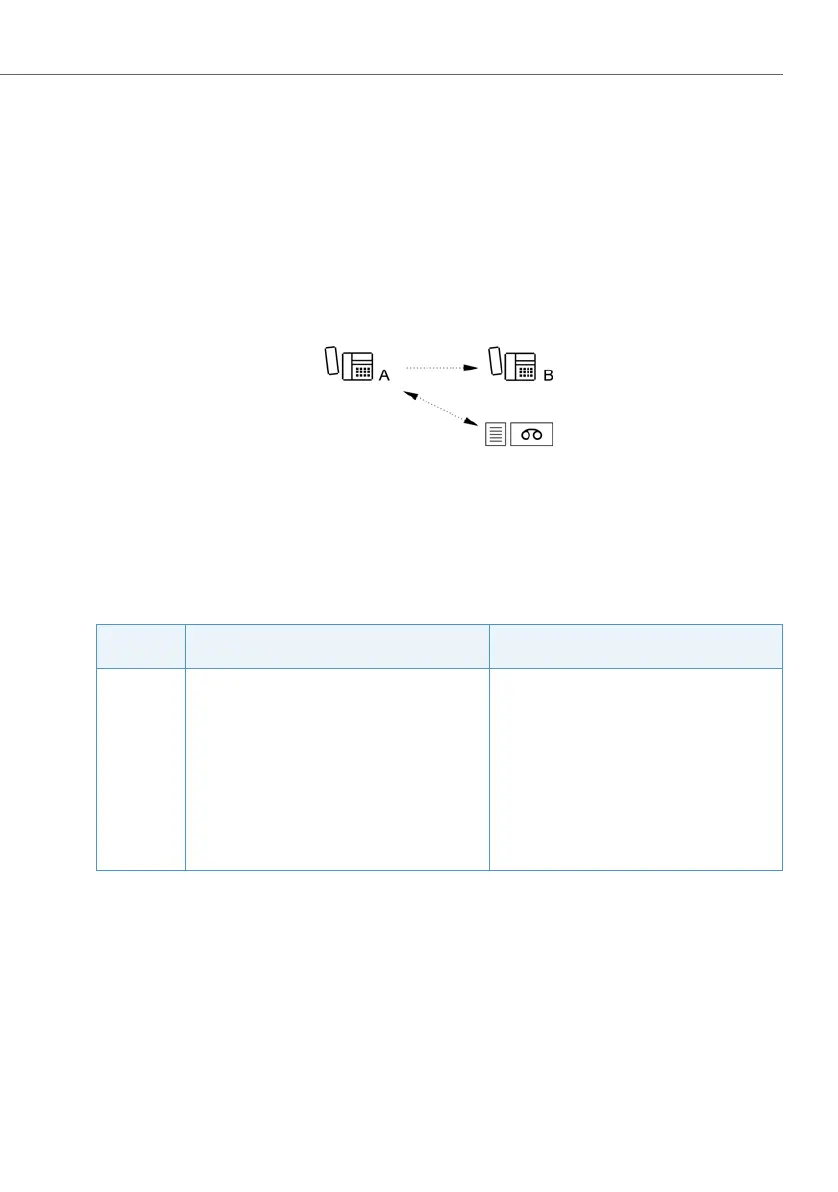Features
507
System functions and features as of R3.0
syd-0367/1.3 – R3.0 – 03.2013
9. 7. 3 Queue with announcement (Number in Queue)
A's call lands at a busy call destination B. The caller will first obtain the greeting of
the announcement service, if so configured. He will then obtain a greeting an-
nouncement, e. g. asking for a little patience as the call destination is busy. De-
pending on the configuration the caller might now obtain music for example and
be notified from time to time of his current position in the queue. It is also possible
to offer the caller alternatives for handling his call at periodic intervals, which can
be selected using the digit keys. If the call is answered, the announcements cease
and the call parties are connected.
Fig. 233 Queue with announcement
The queue with announcement is intended for incoming external calls, but if re-
quired it can also be used for internal calls via a call distribution element.
Detailed Description
Tab. 317 Queue with announcement
The queue is a routing element which is set as the destination for a call distribution
element for each switch position of a switch group. It is situated between the call
distribution element and the actual destination (or combination of destinations)
(see also Fig. 72).
The queue is assigned a virtual user's mailbox. If the call destination is busy, the ac-
tivated mailbox greeting is played back.
Interface
Operating sequence / signalling on the ter-
minal
Scope
A If the internal destination becomes available,
the announcement is interrupted and the ring
back tone is played back.
Possible interfaces:
•External
• Internal, if the call is routed via a CDE
B As soon as B hangs up, the caller waiting in
position 0 in the queue begins to ring.
Possible destinations:
Internal user, user group, key telephone, mul-
tiple destination, attendant, ACD.
Restrictions:
• CFUs at the destination are not carried out.
• Integrated mobile phones and PISN users
are not called.

